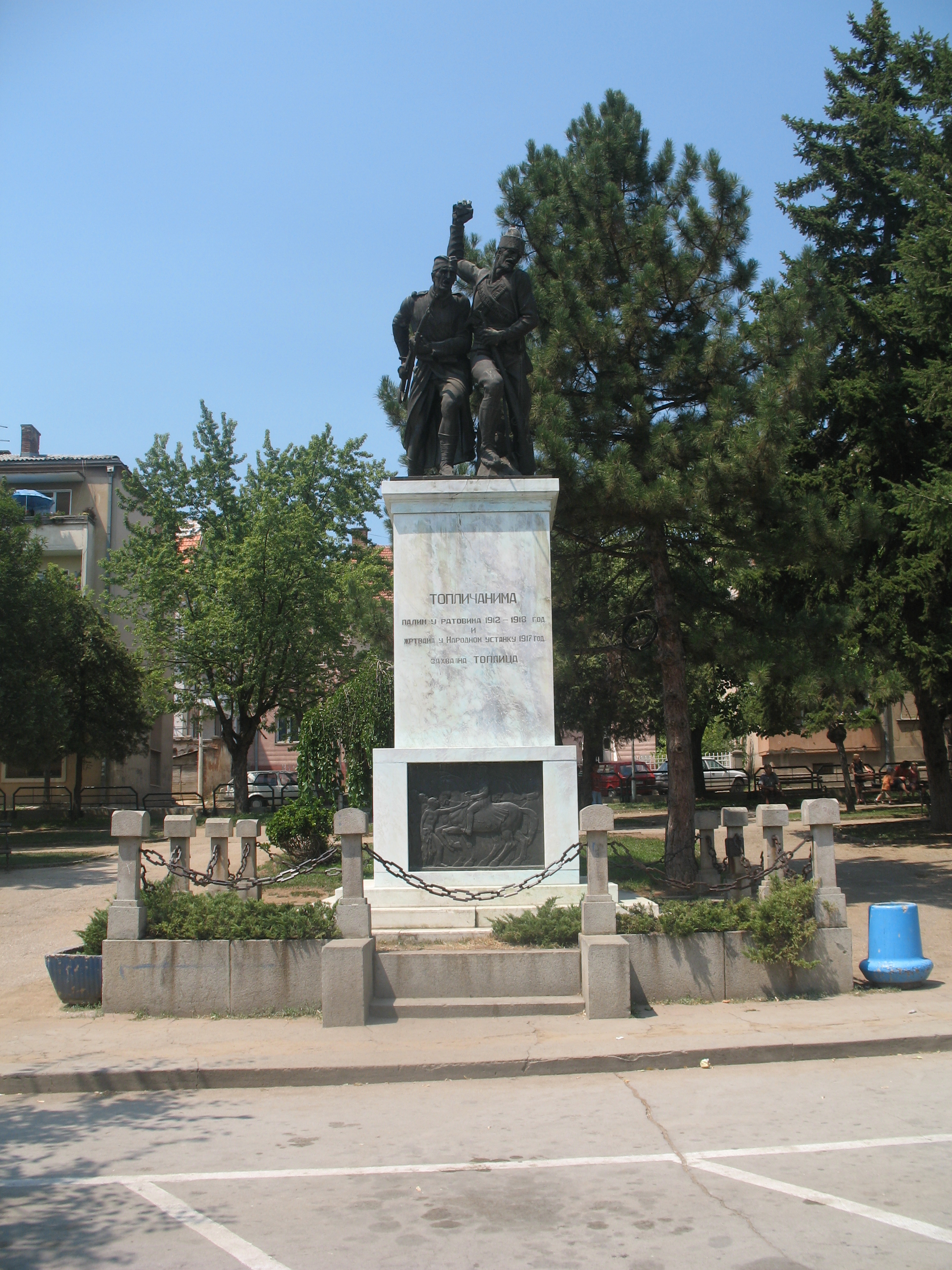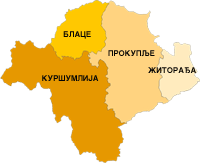|
3rd Army Brigade
The 3rd Army Brigade ( sr, 3. бригада Копнене војске, 3. brigada Kopnene vojske) is a mixed (mechanized infantry and armoured) brigade of the Serbian Army. History The brigade was formed on 4 June 2007 from the former Army units located in eastern Serbia: 211th Armoured Brigade, 9th Infantry Brigade, 125th Motorized Brigade, 549th Motorized Brigade, 4th Motorized Brigade, 352nd Engineer Regiment, 52nd Air Defence Artillery Brigade and several other smaller units. Structure Brigade is concentrated in southeastern Serbia, from the border with Bulgaria in the east to the Danube and Velika Morava rivers in the north and west, and to Toplica area to the south. It consists of mechanized infantry, armoured, artillery, air defence artillery, engineer, signal and logistics units. * 30th Command Battalion - Niš * 31st Infantry Battalion - Zaječar * 32nd Infantry Battalion - Zaječar * 33rd Self-propelled Howitzer Artillery Battalion - Prokuplje * 34th Multi ... [...More Info...] [...Related Items...] OR: [Wikipedia] [Google] [Baidu] |
Prokuplje
Prokuplje ( sr-cyrl, Прокупље, ) is a city and the administrative center of the Toplica District in southern Serbia. According to 2011 census, the city urban area has a population of 27,333 inhabitants, while the administrative area has 44,419 inhabitants. Prokuplje is one of the Roman sites of Serbia. The town was known as Ürgüp during Ottoman rule and was incorporated into the Kingdom of Serbia in 1878. Geography Prokuplje is located between municipalities of Blace, Kuršumlija, Bojnik, Žitorađa, Merošina, Aleksinac, and Kruševac. Climate Prokuplje has an warm-summer mediterranean climate (Köppen climate classification: ''Cwb'') that's close to a humid subtropical climate (Köppen climate classification: ''Cfa''). History and archaeology Neolithic and Copper Age The traces of early settlements can be found at Neolithic sites such as Macina (near Zitni Potok), Kavolak west of Prokuplje (village Donja Trnava) and settlements on the south slopes of Jast ... [...More Info...] [...Related Items...] OR: [Wikipedia] [Google] [Baidu] |
Brigades Of Serbia
A brigade is a major tactical military unit, military formation that typically comprises three to six battalions plus supporting elements. It is roughly equivalent to an enlarged or reinforced regiment. Two or more brigades may constitute a Division (military), division. Brigades formed into divisions are usually infantry or armored (sometimes referred to as combined arms brigades). In addition to combat units, they may include combat support units or sub-units, such as artillery and engineers, and logistic units. Historically, such brigades have sometimes been called brigade-groups. On operations, a brigade may comprise both organic elements and attached elements, including some temporarily attached for a specific task. Brigades may also be specialized and comprise battalions of a single branch, for example cavalry, mechanized, armored, artillery, air defence, aviation, engineers, signals or logistic. Some brigades are classified as independent or separate and operate ind ... [...More Info...] [...Related Items...] OR: [Wikipedia] [Google] [Baidu] |
Royal Serbian Army
The Army of the Kingdom of Serbia ( sr-cyr, Војска Краљевине Србије, Vojska Kraljevine Srbije), known in English language, English as the Royal Serbian Army, was the army of the Kingdom of Serbia that existed between 1882 and 1918, succeeding the Armed Forces of the Principality of Serbia and preceding the Royal Yugoslav Army. Organization Field armies * First Army (Serbia) * Second Army (Serbia) * Third Army (Serbia) * Timok Army * Užice Army Orders of battle * Order of battle of the Serbian Army in the First Balkan War * Order of battle of the Serbian Army in World War I Wars Military equipment Armament Uniform *Šajkača See also * First Serbian Volunteer Division * Serbian Chetnik Organization * Serbian Army References Sources Books * * * * Journals *Mijalkovski, Milan. "Četničke (gerilske) jedinice Kraljevine Srbije–borci protiv terora turskog okupatora." Zbornik radova Instituta za savremenu istoriju 09 (2007): 59–81. *Becić, Ivan ... [...More Info...] [...Related Items...] OR: [Wikipedia] [Google] [Baidu] |
Bofors 40 Mm Automatic Gun L/70
The Bofors 40 mm Automatic Gun L/70, (Bofors 40 mm L/70, Bofors 40 mm/70, Bofors 40/70 and the like), is a multi-purpose autocannon developed by the Swedish arms manufacturer AB Bofors (today BAE Systems Bofors) during the second half of the 1940s as a modern replacement for their extremely successful World War II-era Bofors 40 mm L/60 gun-design. It was initially intended as a dedicated anti-aircraft weapon, being sold as ''Bofors 40 mm Automatic A.A. Gun L/70'', but has since its conception been redeveloped into a dedicated multi-purpose weapon capable of firing both sabot projectiles and programmable ammunition. The Bofors 40 mm L/70 design never achieved the same popularity and historical status as the original L/60 design but has still seen great export and popularity to this day, having been adopted by around 40 different nations and even being accepted as NATO-standard in November 1953. It is still being produced and sold (since March 2005 by BAE S ... [...More Info...] [...Related Items...] OR: [Wikipedia] [Google] [Baidu] |
9K31 Strela-1
The 9K31 ''Strela-1'' (russian: 9К31 «Стрела-1»; en, arrow) is a highly mobile, short-range, low altitude infra-red guided surface-to-air missile system. Originally developed by the Soviet Union under the GRAU designation 9K31, it is commonly known by its NATO reporting name, SA-9 "Gaskin". The system consists of a BRDM-2 amphibious vehicle, mounting two pairs of ready-to-fire 9M31 missiles. Development history The missiles used in this system were developed alongside the ubiquitous Soviet MANPADS 9K32M "Strela-2" (NATO designation SA-7 "Grail") in the 1960s. At first, both missiles were intended to be man-portable systems, but as it became obvious that the Strela-2 would be far more compact, the development goals of Strela-1 were changed. Instead of a battalion-level man-portable system the new criteria called for a regimental vehicle-mounted SAM to support the ZSU-23-4. As a result of the change in role and more relaxed weight limits of a vehicle-mounted SAM, the d ... [...More Info...] [...Related Items...] OR: [Wikipedia] [Google] [Baidu] |
M-77 Oganj
The M-77 Oganj is a 128mm self-propelled multiple rocket launcher developed in the former Yugoslavia. NATO designation is the YMRL-32. Development Development started in 1968. Professor Obrad Vučurović, mechanical Engineer and Chief Operating Officer of the Artillery department of Military Technical Institute, developed and managed construction and production of the M-77 Oganj. The 6 pre-serial production version, based on a FAP 2220 6x6 truck, was shown to the public for the first time in 1975. Serial production started two years later. The M-77 is mounted on FAP 2026 BDS/A 6x6 truck bed. The rocket system is placed on the back of the platform with 32 128mm launch tubes capable of reaching targets 20,600 metres away. The crew consists of five men. In 1994 Serbia developed new version called Oganj C with designation M-94. Oganj C (M-94) could fire two type of rockets M91 (cluster-type warhead with 40 submunition grenades) and M77 (HE warhead). Other feature was design that it ... [...More Info...] [...Related Items...] OR: [Wikipedia] [Google] [Baidu] |
2S1 Gvozdika
The 2S1 ''Gvozdika'' (russian: link=no, 2С1 «Гвоздика», "Carnation") is a Soviet self-propelled howitzer based on the MT-LBu multi-purpose chassis, mounting a 122 mm 2A18 howitzer. "2S1" is its GRAU designation. An alternative Russian designation is SAU-122 but in the Russian Army it is commonly known as ''Gvozdika''. The 2S1 is fully amphibious with very little preparation, and once afloat is propelled by its tracks. A variety of track widths are available to allow the 2S1 to operate in snow or swamp conditions. It is NBC protected and has infrared night-vision capability. Description The 2S1 has seven road wheels on each side; the running gear can be fitted with different widths of track to match terrain. The interior is separated into a driver's compartment on the left, an engine compartment on the right and a fighting compartment to the rear. Within the fighting compartment the commander sits on the left, the loader on the right and the gunner to the front. ... [...More Info...] [...Related Items...] OR: [Wikipedia] [Google] [Baidu] |
BRDM-2
The BRDM-2 (''Boyevaya Razvedyvatelnaya Dozornaya Mashina'', Боевая Разведывательная Дозорная Машина, literally "Combat Reconnaissance/Patrol Vehicle") is an amphibious armoured scout car used by states that were part of the Soviet Union and its allies. It was also known under the designations BTR-40PB, BTR-40P-2 and GAZ 41-08. This vehicle, like many other Soviet designs, has been exported extensively and is in use in at least 38 countries. It was intended to replace the older BRDM-1, and has improved amphibious capabilities and better armament compared to its predecessor. History After a few years of use by the Soviet Army, the limitations and drawbacks of the BRDM-1 became obvious. The vehicle had no turret and to operate the armament the gunner had to open a hatch and expose himself to enemy fire. The vehicle was not fitted with an NBC protection system, and had no night vision equipment by default. The vehicle also lacked any kind of spec ... [...More Info...] [...Related Items...] OR: [Wikipedia] [Google] [Baidu] |
BVP M-80
The BVP M-80, is a tracked Yugoslavian-made infantry fighting vehicle, produced from the 1980s until the country's collapse in the 1990s. Development Early research and development of the M-80 began in 1969, with testing of the first completed prototype in 1974. It was first presented publicly in 1975. First examples of the BVP M-80 rolled out in 1979 but full entry to service happened in 1982. The first production variant was the M-80 which was only made in small numbers. The vehicle used a French-built engine with an output of 260 hp, the same engine as used in AMX-10P. After only a year, Yugoslavia started license production of Daimler-Benz's 315 hp engine in domestic FAMOS factories. This variant received a new designation as M-80A. Around 1000 vehicles were produced before the breakup of the country. At the time it was produced, M-80A had similar characteristics with existing IFVs like Russian BMP-1 or French AMX 10P. Although many foreign experts compare M-80A wit ... [...More Info...] [...Related Items...] OR: [Wikipedia] [Google] [Baidu] |
M-84
The M-84 is a Yugoslav main battle tank, a variant of the Soviet T-72. The M-84 is still in service in Croatia, Serbia, Bosnia and Herzegovina and Kuwait. Development and production Development The M-84 is based on the Soviet T-72M (export variant of T-72A) but with many improvements, including introducing domestic fire-control system that T-72M lacked, improved composite armor, and a 1000- hp engine. The M-84 entered service with the Yugoslav People's Army in 1984. The improved M-84A version entered service a few years later. Other variants were introduced later, most being modernization packages. Production in Yugoslavia There were about 240 Yugoslav factories which directly participated in the production of the M-84 and about 1,000 others which participated indirectly. Finalist was chosen to be in Đuro Đaković (company) Croatia by Josip Broz Tito, among other proposed manufacturers in Serbia: Goša FOM Smederevska Palanka and Mašinska Industrija Niš that where a ... [...More Info...] [...Related Items...] OR: [Wikipedia] [Google] [Baidu] |
Kuršumlija
Kuršumlija ( sr-Cyrl, Куршумлија, ) is a town and municipality located in the Toplica District of the southern Serbia. It is situated near the rivers Toplica, Kosanica and Banjska, southeast of Mount Kopaonik and northwest of Mount Radan. As of 2011, the town has 13,306 inhabitants, while municipality has 19,213. Geography Kuršumlija sits on the area of and administratively is in Toplica District. Its borders the municipalities of Brus, Blace, Prokuplje, Medveđa, Podujevo, and Leposavić. Its southwest border (105 km) is within the disputed territory of Kosovo. History The Romans established the Ad Fines military outpost in the 3rd century AD. There are also remains of churches from the Byzantine period. The Serbian principality of Rascia expanded from this region. Stefan Nemanja, a Serbian lord (župan), and the founder of Nemanjić dynasty, built his residence here, as well as the two monasteries of St Nicolas and the Holy Mother of God (before 1168) ... [...More Info...] [...Related Items...] OR: [Wikipedia] [Google] [Baidu] |









